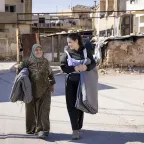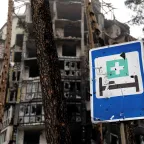South Sudan: January to June 2025 Facts & Figures
January to June 2025 Following the escalation of armed conflict and violence across South Sudan in the first half of 2025, the ICRC stepped up its surgical capacity conducting hundreds of surgeries …
January to June 2025 Following the escalation of armed conflict and violence across South Sudan in the first half of 2025, the ICRC stepped up its surgical capacity conducting hundreds of surgeries …

Statement from Julien Lerisson, Head of Delegation in Israel and the occupied territories "The civilian population in Gaza is living in abhorrent conditions. Further displacement and an …

The International Committee of the Red Cross (ICRC) and the Z Zurich Foundation have entered a multi-year collaboration to support and expand mental health and psychosocial support (MHPSS) in …

15 July to 15 August 2025 Since 13 July, the International Committee of the Red Cross (ICRC), together with the Syrian Arab Red Crescent (SARC), has been fully mobilized to respond to some of the …

21-08-2025 Geneva/Amman (ICRC) – The International Committee of the Red Cross (ICRC), under the patronage of His Excellency Mr Kim Pil-Woo, the Ambassador of the Republic of Korea to Jordan, …

22-08-2025 Manila (ICRC) – Mirjana Spoljaric, president of the International Committee of the Red Cross (ICRC), emphasised the critical role of international humanitarian law (IHL) in alleviating …

In the provinces of North Kivu, South Kivu and Ituri in the eastern Democratic Republic of the Congo (DRC) – which has endured the effects of armed conflict for over 30 years – thousands of cases of …

What are the key ongoing legal debates around contemporary IHL issues? Why does that matter for academics and policymakers? How can professionals from those sectors support each other in addressing …

January to June 2025 In the first half of 2025 , the International Committee of the Red Cross (ICRC), either independently or in partnership with the Sudanese Red Crescent Society (SRCS), responded …

26-08-2025 A tribute to Marawi’s missing people and their families’ relentless search for answers Manila (ICRC) – A coffee table book was launched and a photo exhibition was inaugurated today in …

Try one of the following resources:
Created in 1863, the ICRC library, alongside the ICRC archives, provides an indispensable documentary reference on the organization itself and international humanitarian law.
International humanitarian law is based on a number of treaties, in particular the Geneva Conventions of 1949 and their Additional Protocols, and a series of other instruments.
Customary international humanitarian law consists of rules that come from "a general practice accepted as law" and that exist independent of treaty law.